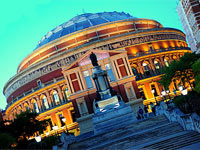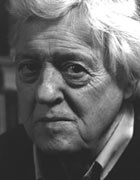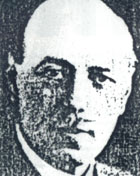2010 Regional Championships of Great Britain - Test piece reviews
1-Mar-20104BR has a closer look at the five regional test pieces - covering close to 100 years of compositional history.
 There are five very interesting and contrasting test pieces to be overcome this year, encompassing close to 100 years of compositional history, if bands are to make it through to London and Harrogate.
There are five very interesting and contrasting test pieces to be overcome this year, encompassing close to 100 years of compositional history, if bands are to make it through to London and Harrogate.
As befits a qualification process, they are not easy by any means, and on paper should do an ideal job of separating the prize winning wheat from the also ran chaff.
That of course depends a great deal on the adjudicators in the box.
Even though there have been the odd raised eyebrow in certain quarters about ‘conflicts of interest’ to be fair there has not been a single complaint that 4BR knows of that has been lodged with any of the regional secretaries.
Still, we are sure there will be quite a few grumbles come the announcement of the results up and down the country in the next few weeks – but that’s contesting for you.
 English Heritage (George Lloyd)
English Heritage (George Lloyd)
The Championship Section bands will be faced with the welcome return of a neglected classic – George Lloyd’s ‘English Heritage’. That may come as a surprise given that the piece has long been on the list of many players and conductors contesting favourites.
The piece was commissioned by Michael Walker for the Historic Buildings and Monuments Commission for England – hence its title ‘English Heritage’ and was first performed jointly by Black Dyke and Grimethorpe Colliery, conducted by Geoffrey Brand at a Kenwood Lakeside Concert on 2nd July 1988 in the presence of the composer.
Two years later it was chosen as the set work for the National Finals at the Royal Albert Hall, where the then CWS (Glasgow) Band conducted by John Hudson took the title.
Lloyd himself was a highly cultured man, who produced his first Concerto at the age of 19. His early musical career was one of huge promise, with his melodic style of writing finding success in opera in particular.
However, an almost farcical tragedy when he was serving as a bandsman in the Second World War left him shell shocked and deeply disturbed by the horror of what he witnessed when his ship, HMS Trinidad, was sunk by one of its own torpedoes.
His recovery was long and painful – much of the time spent in the country with his beloved wife cultivating carnations and growing mushrooms, but a slow trickle of compositions still intermittently flowed from his pen.
Although his music was not popular with those in recording authority, his reputation was being slowly rebuilt and his works becoming more well known and performed.
In 1977 his 8th Symphony was broadcast to wide acclaim, and in the early 1980’s more of his symphonic output was recorded and performed including the large scale choral work, ‘The Vigil of Venus’.
A commission for the BBC Northern Brass Ensemble saw a first foray into writing for brass, and in 1985 his thoughtful, and at times, deeply moving ‘Royal Parks’ was used as the set work at the European Championships. This was soon followed by the more expansive ‘Variations on a Bass Theme’ (the Bass in question relating to both the theme and the brewery sponsors of the piece) and in 1988, ‘English Heritage’.
The work is 17 minutes or so of wonderful music.
Darkly hued to open with aggressive little motifs, it soon flowers brightly with striking lyricism. The thematic material is transparent and accessible (and reminds you of the music scored for the Kirk Douglas film, ‘The Vikings’) with contrasting elements skilfully interwoven into its fabric.
The technical centre piece is provided by the truly fearsome cornet feature which sees light fingered ascending filigree work climax with a breathless top Eb fortissimo pause, before the rest of the band rescue the protagonist from their lung bursting effort.
Echoes of the composer’s former symphonic works are heard, and whilst the music retains that mournful undercurrent there are emerging episodes of neat wit and brighter, almost peaceful happiness. The finale is huge and glorious and brings a fine work to a resounding close.
’English Heritage’ remains a superbly constructed work, one that more than deserves this rather belated return.
Lloyd himself died in 1998, by which time his works were finally being recognised in all quarters of the musical world. Now it is the banding movements time to enjoy him again.
A Moorside Suite (Gustav Holst)
Gustav Holst’s charming ‘A Moorside Suite’ has long been regarded as an undisputed classic of the brass band genre, although strangely it was used just the once as a test piece at the Nationals and British Open.
Written during 1927 for the 1928 National Brass Band Championships of Great Britain, the work was commissioned by the fledgling BBC and John Henry Iles.
The work was heralded in a most understated way though in the programme to the 1928 contest: “Now in his first work for brass band, called “A Moorside Suite”, he (Holst) breaks fresh ground”.
That however is perhaps debatable, as much of the inspiration seems to stem from ideas that blossomed from the English folk music tradition, that Holst’s daughter later commented: “The suite is a fitting acknowledgement of a twenty year’s debt of gratitude for the solid and companionable help that folk song has brought him.”
The music is full of the spirit of the English folk tradition, if not directly inspired by attributed sources. It remains perhaps the only true brass band work that combines, as his daughter pointed out: “...these two highly significant musical impulses.”
Holst himself was described by her as, ‘..a socialist composer who had played the trombone in a theatre band.’ A somewhat downbeat sobriquet hides the fact that he was a charming man, a life long friend of the great Ralph Vaughan Williams and an inspirational teacher.
The work is in three contrasting movements, with an opening 'Scherzo' that is full of playfulness, delicately scored and crafted, and which evokes images of a timeless England of picture postcard agricultural village life.
In contrast, the beautiful ‘Nocturne’ is more introspective. A wistful theme permeates throughout, warmly coloured and subtly textured, a loving eye cast upon a vista of Edwardian husbandry.
The final ‘March’ is a classic of style and purpose – a robust theme that crucially never descends into bombast. The finale provides one of the great moments of brass band test piece writing – a glorious, warmly hued reprise that can induce deep, lasting emotion.
 The Kingdom of Dragons (Philip Harper)
The Kingdom of Dragons (Philip Harper)
The most modern work to be used this year, ‘The Kingdom of Dragons’ by Philip Harper was commissioned by the Gwent Music Support Services to help celebrate the 50th anniversary of the Gwent Youth Brass Band.
Initially the work was entitled, ‘Venta Silurum’ (the Roman name for the area), but was renamed to give it a perkier title.
The music takes inspiration from each of the four local authorities that provide funding for the Gwent Youth Band – Monmouthshire, Blaenau Gwent, Torfaen and Newport.
Although Philip Harper was born in Essex and bred in his formative musical years across the River Severn studying music at Bristol University, his keen sense of Celtic history (and wit) is cleverly realised in each of the works four movements.
The piece opens with the fanfares and medieval splendour of the ancient castles of Monmouthshire, before making a detour up through the Sirhowy Valley into the dark recesses of the hellish depths of the mining industry of Blaenau Gwent.
A short detour across the Heads of the Valley and down through the industrial heritage of Blaenavon brings the music to the untouched oasis of beauty to be found in Pontypool Park in Torfaen, before ending further south amid the bustle of the emerging city of Newport.
It’s not a ‘Tourist Board’ whitewash job though.
The composer has done his homework with an appreciation that not all is what it seems at first glance.
The opening fanfares evoke images of former, not current splendour (the castles of the area are all in ruins), whilst the descent to the pit face brings to mind the real toil of the miner, and not just the romanticised image of ‘How Green was my Valley’ even when there is a momentary pause for lyrical reflection.
The oasis of Pontypool Park on the other hand is coupled between the natural beauty of the flora and fauna with that of the fearsome rugby team of folklore, who roamed the pitch found in its grounds – and in particular, the frightening trio of Welsh front row mayhem that was Charlie Faulkner, Bobby Windsor and Graham Price – the ‘Viet Gwent’.
These were three men you wouldn’t have wanted to bump into on a dark night in a scrum.
Finally, the vigour and vibrancy of Newport – a pretty dour old city that is in the process of being transformed in time for the 2010 Ryder Cup.
The contrasts, both real and assumed, of a truly historic area of Wales are wonderfully brought to life.
 Labour & Love (Percy Fletcher)
Labour & Love (Percy Fletcher)
’Labour & Love’ is a seminal work in the history of the brass band movement – although more by historical happenstance than anything else.
Percy Fletcher’s work became the first ‘original’ brass band composition to be used as a test piece, when it was performed at the 1913 National Championships at Crystal Palace.
Fletcher was a conductor and composer of light music, ballads, salon pieces and theatre music, who left little impression on the greater musical public on his death. He is though best known to the banding movement for ‘An Epic Symphony’, and for this curious work.
The piece was originally called ‘A Comedy of Errors’ and was written in response to a call made by British Bandsman newspaper Editor Herbert Whiteley for ‘better’ music for brass bands.
Mindful of the title, the piece was initially rejected, but soon resurfaced under its new name of ‘Labour & Love’ – a crafty reinvention (imposed it is suspected by Iles and Whiteley and then aided by the composer) given the rising popularity of the trade union and wider ‘Labour’ movement (Robert Tressell’s seminal work of literature, ‘The Ragged Trousered Philanthropists’ was published in 1914).
In it’s way that was a ‘first’ for the brass band movement too – although many others have since followed suit.
It is not however a celebration of romanticised working class values – more a piece of flimsy opportunism to ‘create’ a story to fit what is in essence, a rather dated, conservative construction of 19th century operatic tone poem writing.
Fletcher was no novice to the brass band genre (he had been to Crystal Palace to hear bands play at the Nationals before), and the work has an easily defined lineage to the operatic selections that were the staple diet of the contest in the preceding years.
The fly leaf notes are romantic bluff: ‘The introduction typifies the state of mind of a man, who, having no love for his work, finds his surroundings oppressive and fancies himself merely in the position of a downtrodden salve,” Fletcher loquaciously writes.
He adds: “The Allegro agitato represents him engaged in his daily task, blindly labouring on, using mere muscular force, having no purpose in view. The interlude Meno Mosso, leads into the Andante patetico where his soul cries out in a lament of anguish and despair that he will labour no longer under these conditions.. etc, etc…”
There is more of this is Barbara Taylor-Bradford stuff – and equally as nonsensical.
Even the final claim: “He realises he has a purpose in life, and his work is now to him a Labour of Love”, is rather meaningless given that particular titled inspiration comes from the Bible (Thessalonians 1:2, 1:3) rather than a copy of the 1913 Morning Star newspaper.
Still, it’s a tricky old piece, full of colourful writing and expressive lyricism and more than enough technical challenges to test bands of a higher standard than that in the Third section.
Plenty of bands will ‘labour’ their way through 97 year old work, but it will be questionable to how many will actually grow to ‘love’ it.
 Saint-Saens Variations (Philip Sparke)
Saint-Saens Variations (Philip Sparke)
Nobody does pieces like this better than Philip Sparke.
Take an old classic, pick out the best bits and shake them around with an expert craftsman’s skill of the compositional art, and the end result is a little gem like this.
It may sound easy enough to do, but by heck, the closer you look at this piece the clearer it becomes just how brilliant a bit of work it is.
Originally written for the wonderfully named Sierra Vista High School Symphonic Band of Las Vegas (where else) it gave Philip the chance to realise a bit of a personal ambition – to write a set of variations on the famous chorale from Saint-Saens ‘Organ Symphony’ No 3.
He approached the task though with a steely determination to provide something original and not just to buff up the best bits.
He therefore explores more than just the famous chorale, particularly the lovely slow movement, so whilst we get to hear the familiar, we also get to hear the less familiar too.
As always with Sparke’s works, the result is transparent and accessible (even if it is a tough old ask for Fourth Section bands) and one that will surely be enjoyed by competitors and listeners alike.
The brass band version (reworked in 2009) is shorter and more simplified than the wind band one, but retains all the essential elements that made the original so popular and exciting.
The work shifts seamlessly between styles and keys, ending in all its glory with a majestic climax. It is a cracker, that although very, very testing should provide wonderful entertainment as well as contesting.
You can’t ask for anything more than that.















